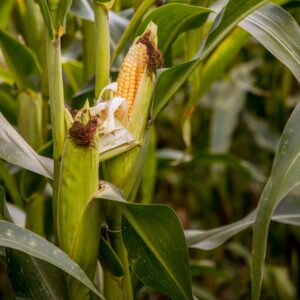
Rain does not always fall where humans want it to fall, but we work with it to our own advantage.
On a national level, dams such as the Gariep Dam, Vanderkloof Dam, Midmar Dam, Pongolapoort Dam, Vaal Dam or Theewaterskoof Dam have been constructed to collect and store rain water on a large scale. To address the country’s needs, government plans to build new dams or expand existing ones at Mzimvubu River (Eastern Cape), Clanwilliam Dam (Western Cape), the Nwamitwa Dam and Tzaneen Dam (Limpopo), the Hazelmere Dam (KwaZulu-Natal) and the Polihali Dam (in Lesotho to provide water to Gauteng).
On a local or farming level, thousands of smaller dams have been built by the owners of the land, using their tractors, dam scrapers, front-end loaders or other equipment available on the farm. At a later date this water will be used for irrigating crops, drinking water for animals and even as drinking water for human consumption.
The companies listed on this page are involved in water storage. Other companies involved in the water sector are listed on the general “Water” page.
All relevant forms and contact details can be downloaded from www.dws.gov.za.
There are three legal requirements that must be met before a person may construct, alter or repair a dam, namely Entitlement to Water Use, Dam Safety Regulations and Environmental Legislation.
A Water Use Licence or other appropriate authorisation must be obtained from the Regional Director of the relevant region. An extensive guideline named “Water Use Authorisation Application Process” describes this process in detail. Since the acquisition of a new licence for the storage of water takes a considerable time, it is advisable to apply for such a licence as early as possible. Furthermore, the dam safety licence will not be issued for any dam before the Water Use Licence is approved by the Department.
In the case of dams that failed, existing lawful water use (subject to verification) will normally be acknowledged but it is essential that confirmation is obtained in writing from the Regional Director.
The first step is to apply for classification of the dam on form DW 692E if the wall height exceeds 5,0 m and if the storage capacity exceeds 50 000 m3. The Department will then inform the applicant of the classification of the dam and of further procedures.
On completion, the dam must be registered on form DW 693E.
There are further requirements in terms of environmental legislation.
All relevant forms and contact details can be downloaded from www.dws.gov.za.
Section 21(b) of the National Water Act, 1998 (Act 36 of 1998) defines storage of water as a water use. If more than 10 000 m3 of water is stored or in case a dam has a full supply surface area of more than 1,0 hectare, then that water use must be registered on a form that will be supplied by the Regional Director for this purpose. However, in some Water Management Areas the general authorisation does not allow any dam, irrespective of size, outside the licensing procedure and in those areas all dams must be registered. Please contact the relevant Regional Office for information in this regard.
All dams with a safety risk (a dam with a wall height exceeding 5,0 m and with the storage capacity exceeding 50 000 m3) must be registered on form DW 693E. The Department must be notified of any changes of particulars (dam owner, address, telephone numbers, person in control, etc.)
The dam must be operated and maintained in a responsible manner. Basically this requires that the owner, or the person appointed by the owner, will visit and inspect the dam on a regular (at least weekly) basis. Maintenance work must be done regularly. In the case of unsafe conditions, emergency procedures and safety measures must be taken and the Department informed about it.
The dam owner must arrange for the execution of a formal dam safety inspection when instructed to do so by the Department (at intervals between 5 and 10 years). In the case of category II and III dams the inspection must be done by an APP. In the case of category I dams it is not prescribed by whom the inspection must be done but it is in the owner’s interest to appoint an experienced person to perform this task. If necessary, the inspection report will indicate what work should be done to upgrade the dam to acceptable safety standards.
A Water Use Licence or other appropriate authorisation must be obtained from the regional offices. Contact details can be found on www.dws.gov.za (“Customer Care” and “Provincial Customer Care Walk-In Centres”).
Additional information regarding national norms and standards on water storage for irrigation purposes can also be obtained from the Department of Agriculture, Land Reform and Rural Development (DALRRD):
Call 012 842 4017 or email iaeinfo [at] arc.agric.za for the following publications, available from the ARC in Silverton (these publications are also available in Afrikaans):
Information and statistics on water can be found on www.wrc.org.za, website of the Water Research Commission.
Information on the daily and weekly flow into the major dams can be found on www.dws.gov.za.